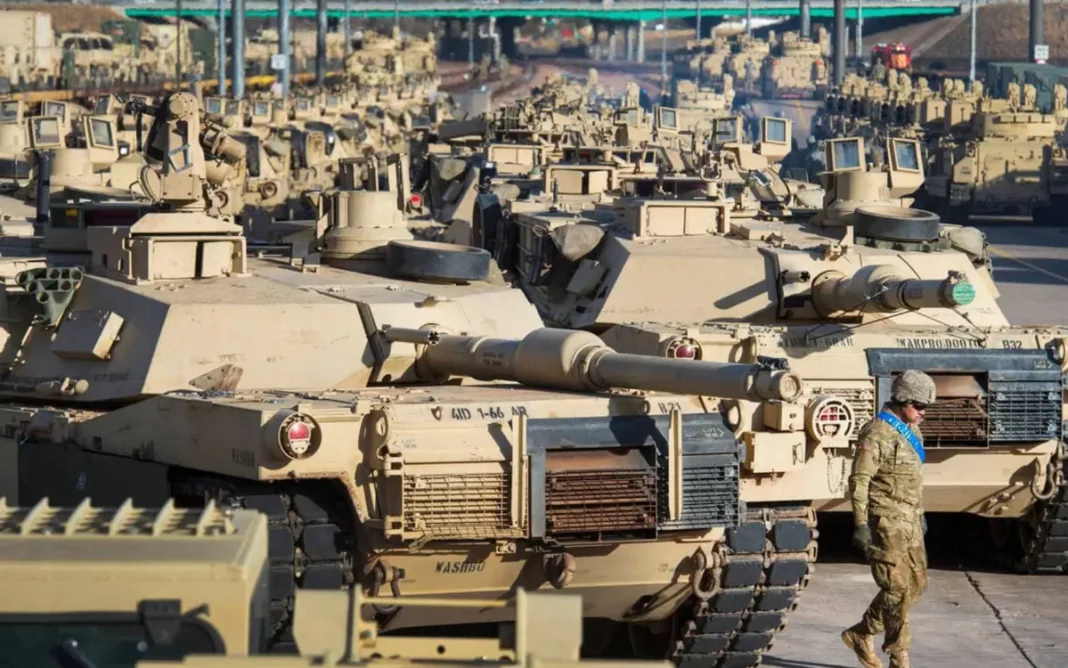In a dramatic surge not seen since the end of the Cold War, global military spending reached a historic $2.7 trillion in 2024, according to a new report by the Stockholm International Peace Research Institute (SIPRI). Defense budgets swelled across more than 100 countries, with all of the top 15 military spenders ramping up their expenditures amid intensifying conflicts and geopolitical shifts.
SIPRI revealed that worldwide military expenditure rose by 9.4% in real terms compared to 2023, marking the tenth consecutive year of growth. Experts warn that governments’ increasing focus on military build-up, often at the cost of other public sectors, could have profound long-term social and economic impacts.
Europe’s Defense Spending Reaches New Heights
Amid the ongoing war in Ukraine and growing uncertainties over U.S. support for NATO, European nations dramatically boosted their defense budgets. Overall military spending in Europe rose by 17%, surpassing levels seen at the height of the Cold War.
Russia’s military outlay surged by a staggering 38% to an estimated $149 billion — twice its 2015 level — making up 7.1% of its GDP and consuming nearly a fifth of government spending. Meanwhile, Ukraine’s defense budget grew by 2.9% to $64.7 billion, accounting for a staggering 34% of its GDP — the highest military burden globally.
Germany also made headlines, increasing its military budget by 28% to $88.5 billion, thereby surpassing India to become the world’s fourth-largest defense spender and the leading spender in Central and Western Europe for the first time since reunification.
“There’s been a significant transformation in European defense policies, with massive procurement plans set to bolster the arms industry in the coming years,” said SIPRI researcher Xiao Liang.
Middle East Conflict Drives Massive Increases
The Middle East also witnessed a sharp rise in military expenditure, reaching an estimated $243 billion — a 15% jump from 2023. Israel’s defense budget alone skyrocketed by 65% to $46.5 billion, reflecting its ongoing military operations in Gaza. SIPRI noted that this marked the steepest annual increase in Israeli defense spending since the Six-Day War in 1967.
In contrast, Iran’s defense spending dropped by 10% to $7.9 billion, largely constrained by international sanctions despite its active involvement in regional conflicts.
China and the U.S. Maintain Dominance
China, maintaining its position as the world’s second-largest military spender, raised its defense budget by 7% to an estimated $314 billion. This growth continues China’s 30-year trend of consistent increases, fueled by its modernization programs and expansion into new military domains such as cyberwarfare and nuclear arms development. China now accounts for half of all military spending in Asia and Oceania.
Meanwhile, the United States remained the world’s biggest defense spender, with military outlays rising by 5.7% to $997 billion — representing 37% of the global total and two-thirds of NATO’s combined defense spending. In 2024, 18 of NATO’s 32 member states met the alliance’s 2% of GDP spending target, the highest number since NATO’s founding.
Top 5 Defence Spenders in 2025
According to GlobalFirepower Index data, the five largest military budgets globally are:
- United States: $895 billion
- China: $266.85 billion
- Russia: $126 billion
- India: $75 billion
- Saudi Arabia: $74.76 billion
As military forces worldwide continue to grow, analysts caution that the escalating arms race reflects an increasingly unpredictable and volatile global landscape.





